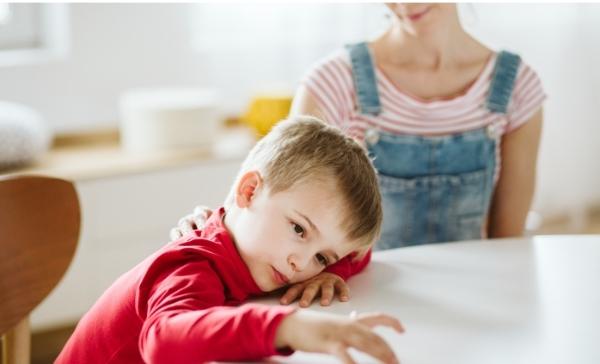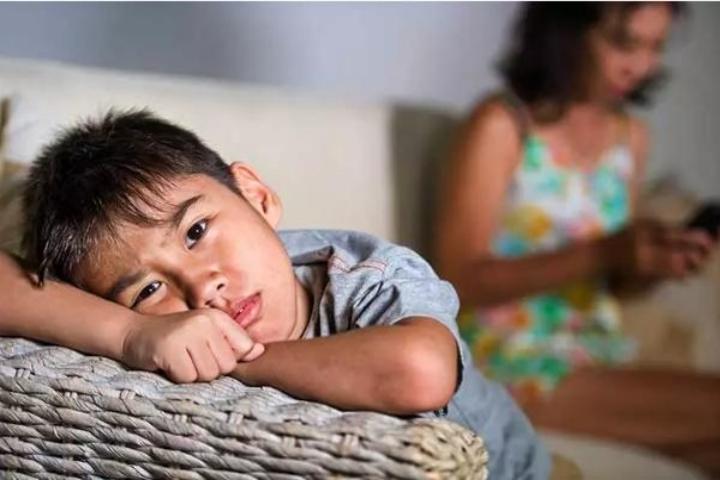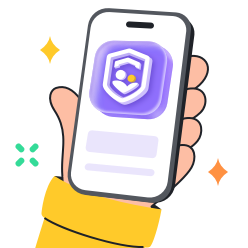Although the concept of diagnosing borderline personality disorder in children might sound strange, early diagnosis is still essential.
While most common in adults, it is possible for a child to develop this mental health condition with symptoms that are not very conspicuous.
Therefore, in this article, we will identify some of the primary symptoms likely to be observed when BPD is suspected in children and parenting strategies for dealing with this problem.
What is Borderline Personality Disorder in children?
Borderline personality disorder in children is a mental illness that brings about instabilities in interpersonal relationships with regard to children.



Although BPD is diagnosed between adolescence and adulthood, it has been argued that some of the symptoms present themselves in childhood.
The diagnosis of BPD in children is still a subject of debate as some of its presented signs resemble regular developmental phases or other childhood disorders.
Psychologists and psychiatrists generally avoid diagnosing patients with personality disorders, particularly when they are kids, and instead label such symptoms as ‘emerging personality disorder traits.’
What parenting style causes Borderline?
There is no exact parenting style that leads to BPD; however, certain parenting strategies can potentially lead to BPD-related symptoms.
Research suggests that the following several parenting styles can be associated with increased risk:
- Inconsistent or chaotic parenting: Uncertainty, instabilities, and even abuse can create problems with emotional self-governance and trust.
- Overly permissive parenting: This type of parenting may appear as ‘caring.’ But often, the lack of structure leads to impulsivity, a major characteristic of BPD.
- Authoritarian parenting: Bullying or a strict environment can make a child feel vulnerable, inferior, and uncomfortable with his own feelings.
- Rejecting or emotionally unavailable parenting: The lack of affection or encouragement may cause children to grow up with relationship problems and attachment issues.
- Parental mental health issues: The failure to treat contracting mental illness in parents will lead to escalated issues in children.
One should bear in mind that these are risk factors rather than direct causes of the said diseases.
Not all patients with BPD have troubled family backgrounds; in fact, many have rather healthy family relationships.
What kind of childhood leads to BPD?
It is necessary to point out that BPD and a troubled childhood are not directly related, although numerous studies link both factors.
The following childhood experiences are often linked to the development of BPD:
- Childhood trauma: It includes physical abuse, sexual or emotional abuse, neglect, or witnessing domestic violence.
- Invalidation: If a child grows up and all their feelings and experiences are ignored or negated, the child is likely to have problems with emotion regulation.
- Inconsistent care: Harsh reinforcement, for instance, switching between uttermost permissiveness and severe restriction, is likely to create instability in attachment and security.
- Emotional neglect: Failure to receive support and encouragement from those in authority negatively affects the well-being of a child.
- Genetic predisposition: Genetic factors, especially a parental history of mental health disorders with some influence from environmental causes.
- Chronic stress: Family-related issues, such as continuous fights and misunderstandings, economic problems, or other constantly experienced stress factors.
- Attachment disruptions: Lack of care, loss of parental or guardian, or lack of close relations.
Signs of Borderline Personality Disorder in children
While the actual diagnosis of Borderline Personality Disorder in children is only possible when the patient is an adult, there are potential symptoms that can manifest themselves in children.
Some of the indicated behaviors may be symptoms of other mental disorders, and for this reason, an evaluation by a doctor is needed.



Common signs of BPD in children may include:
Emotional Instability
- Intense mood swings: Fluctuation of moods within a short time from a positive to a negative, such as being happy to instantly become angry.
- Chronic feelings of emptiness: A feeling of hollowness or a perception of the very existence of life as being devoid of any meaning.
- Difficulty controlling anger: Panic and temper that are not moderate and could not be consistent with the trigger.
Unstable Relationships
- Fear of abandonment: Often experiences anxiety over the loss of a loved person and feeling left out or abandoned.
- Idealization and devaluation: Fluctuating at such a high rate between admiration and hatred.
- Difficulty maintaining friendships: Concerns on how to build a relationship and sustain that relationship.
Identity Disturbance
- Unstable self-image: Changes in the objectives and personal vision that the individual has regarding job and work position.
- Feeling disconnected from oneself: They feel they do not know who they really are.
Impulsivity
- Engaging in risky behaviors: Actions that do not consider the consequences of such behaviors (for instance, substance abuse/drug usage, reckless driving).
- Difficulty controlling spending: Spending money on items one does not require without even considering whether they can make the next paycheck.
- Self-harm: Causing oneself an injury by slashing with a knife, burning the skin with a hot iron, or in any other way.
Other Symptoms
- Black-and-white thinking: Inability to perceive and analyze problems and situations considering diverse occasions, contexts, and relations.
- Dissociation: Being alone with oneself or in a surrounding environment with which one can feel lonely or alone.
- Suicidal thoughts or behaviors: These are rather severe signs that one needs to go and see a doctor about.
If eventually you discover that your child is showing these signs, then you may need to go for a psychiatrist check with them.
How do borderline children treat their mothers?
Children with BPD do not have to behave or be the same and are often as different as the occasion requires.
However, based on common characteristics of BPD, children with this condition may demonstrate certain patterns in their relationships with their mothers:
1. Fear of abandonment: Children who fear abandonment can also get jealous or have constant quarrels with their mothers.
2. Difficulty expressing emotions: These children often get into conflict and bitterness due to their inability to share their feelings with other children.
3. Impulsive behavior: This could be in the form of making wrong or reckless decisions that affect the mother or taking up certain behaviors.
4. Difficulty setting boundaries: They also may not be able to refuse her and, as such, may find themselves being dependent on her in most cases.
5. Manipulation: To ensure their needs are met, children with BPD may easily stage a mock mental illness to appeal to the mother so that she will not abandon them.
6. Difficulty expressing gratitude: They would face difficulties in appreciating the efforts made by the mother.
7. Testing behaviors: They would violate rules or defy formal instructions by the mother on a regular basis.
One must understand that these actions are not premeditated and stem from behavioral issues in the child.
What to do if your kids have BPD?
Managing a child who might be suffering from BPD can be very challenging. Here are some strategies to consider:
Seek Professional Help
- Consult a mental health professional. A therapist who works with children can guide, diagnose, or suggest what needs to be done next.
- Consider a child psychiatrist. If medication is insufficient or if the child has other severe symptoms, then one can consider seeking psychiatric help.
Create a Supportive Environment
- Establish clear boundaries. With set rules, the child easily understands what is expected of them and hence act as they should.
- Validate feelings. It is always good to listen to the feelings of your child, even if you disagree with him/her.
- Encourage open communication. Let your child express himself or herself and speak out the way he or she feels.
- Practice self-care. Parenting a child who has BPD can be a very stressful exercise. Therefore, one needs to look after oneself to be in a better position to handle the child.
Develop Coping Strategies
- Learn about BPD. Understanding the condition will make one deal with it more effectively.
- Attend support groups. Other parents going through similar situations may also provide support.
- Practice patience and empathy. This is important to remember because your child is not behaving this way on purpose; they are a sick child.
Safety and Crisis Management
- Develop a safety plan. Ensure to have contingency measures that can be adopted in case of emergencies such as self-harm or suicidal thoughts.
- Collaborate with school. Make sure the teachers and counselors know about the condition of your child.
- Seek emergency help if necessary. It is advised that you ask for emergency services if you feel that your child is in a dire situation.
Additional Considerations
- Involve the entire family. Couples and family therapy is quite beneficial in dealing with BPD’s effects in the family.
- Be patient. Cognitive behavioral therapy for BPD can take time and is normally a long procedure.
- Celebrate small victories. Talk positively to students and children and encourage the right kind of behavior.
How should parental controls use for borderline personality disorder in children?
The utilization of parental controls proves to be a significant help in preserving the digital terrain of a child with Borderline Personality Disorder (BPD).
Parents can reduce the possible harm by reducing the risk factors and confining the internet experience to a set sequence that a child is likely to follow with the help of parental controls.
Key strategies for using parental controls would include:
1. Limit Screen Time: Anger, irritability, and mood swings are some symptoms that can be made worse by spending too much time before screens. Setting aside some time to use devices can control the outburst of emotions and prevent them from becoming addicted to devices.
2. Filter content: Take advantage of parental control options, which allow you to bar certain programs or sites featuring violence or cyberbullying. This can help shield the child from any material that may cause stress or adversely affect his or her well-being.
3. Monitor online activity: Monitor your child’s use of any of the mentioned platforms so that you can look out for any worrying signs or signals. This can thus help in early identification and ensure that the required interventions are accorded to the child.
4. Create a safe online space: They should regularly discuss their internet usage and set boundaries concerning appropriate behavior on the internet. This can create a culture that brings assurance and security.
In this respect, one such parental control tool that can be of great help is the FlashGet Kids app. This parental control app aims to establish a safe tech environment for kids.
It offers a range of features that can be particularly beneficial for children with BPD:
- App Blocking: Limit apps that may cause one to act unconstrained or lead to emotional fluctuations.
- Screen Time Management: Define the time the user spends using applications for the day, week, or any period the user sets.
- Geofences help create a barrier within which your kid should stay. You’ll get alerts when your child crosses this circular barrier, which can expose them to triggers for their condition.
- Location Tracking: Keep track of the geographical location of your child for any safety issues.
- Keyword detection: Get alerts when your kids interact with strangers who use certain inappropriate words. You’ll then make the necessary actions to ensure your kid is kept from harm.
- Social media monitoring through Screen mirroring: Check their level of engagement in social networks and their actions, looking for signs of emotional discomfort or self-harm.
With these features, the use of the FlashGate Kids application can be useful for parents to create a healthy and safe virtual space for their child with BPD.
Conclusion
Children diagnosed with the disorder can be quite challenging to deal with; therefore, patience is an important tool to adopt when dealing with such kids.
Information on the symptoms to look out for and the right parenting strategies can go a long way in shaping the child’s recovery process to emotional balance.
However, it is significant to mention that with the correct parenting for children with BPD traits, the road can be incredibly difficult, but the end result can be achieved.
FAQs
Is BPD due to bad parenting?
BPD is not solely attributed to bad parenting. It is a multifactorial condition involving genetic, biological, and environmental factors. Though childhood experiences play a role, numerous other factors are involved in BPD formation.
What are the 4 types of mothers with BPD?
Four common patterns in mothers with BPD are: They identified four archetypes:
1. Waif: passive, dependent.
2. Hermit – shy, afraid.
3. Queen – controlling, authoritative.
4. Witch – vengeful.
These categories are not clinical diagnoses but serve to describe different forms of BPD in maternal relationships.
Does BPD get worse with age?
Many of the symptoms of BPD are known to lessen as the person gets older. Most people are known to have their impulsiveness and emotional fluctuations decrease with age. However, this isn’t universal. While some may remain in such a state, others may improve their way of handling situations through therapy and life events.

